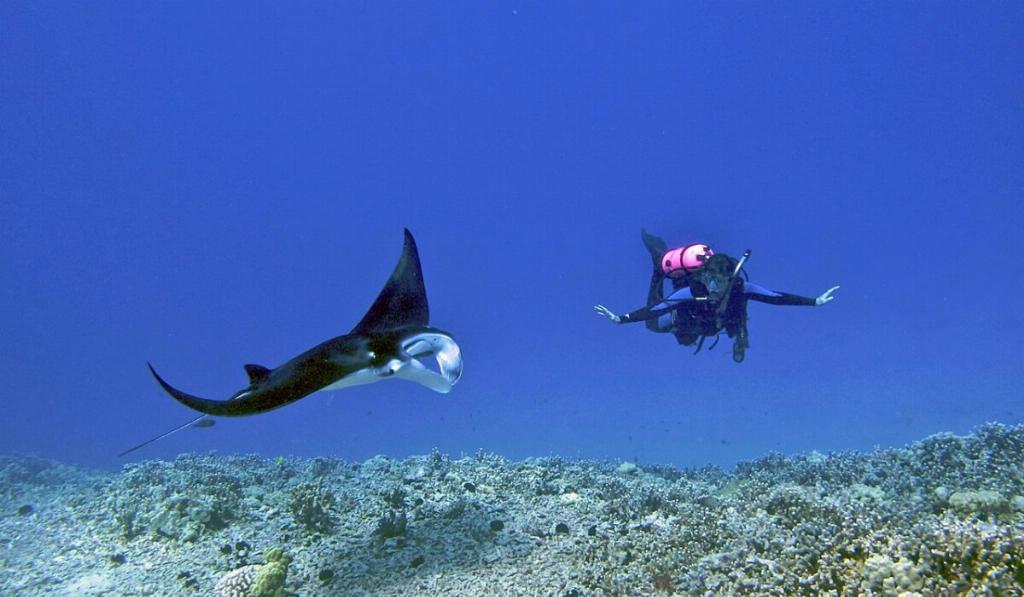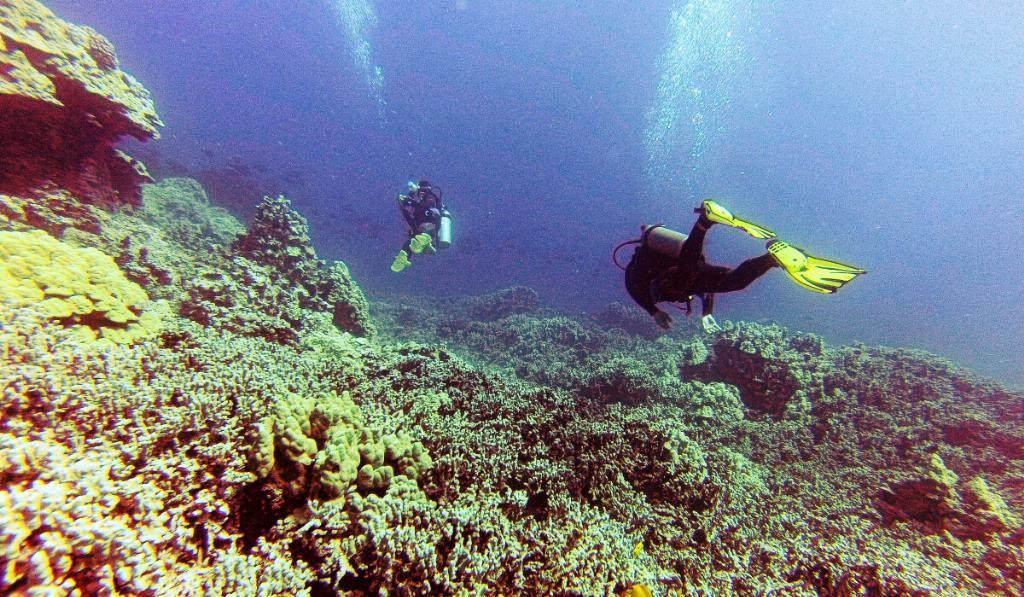Plongée sous-marine en Hawaii
Informations générales
Infos sur la plongée
 Crédit :
commons.wikimedia.org
Crédit :
commons.wikimedia.org
 Crédit :
www.flickr.com
Crédit :
www.flickr.com
Quand visiter
Some dive sites may be closed in the winter months (December through March).
Conditions de plongée
Hawaiian waters average 77° F/25° C in the winter and 82° F/28° C in the summer.
Currents are generally predictable; local dive guides should be able to give you all the information about the currents you can expect at each dive site.
The visibility on the Big Island is typically great, exceeding 82 feet/25 meters.
Types de plongée
Points forts
Lava Tubes
A lava tube is a cave that can form after the lava flow has slowed down and cooled, creating a crust around itself. The underwater lava tubes are nothing short of breathtaking, creating rare spectacular seascapes. Around the Big Island, divers can see tunnels, caverns, and arches created by lava.
Coral Reefs
The Hawaii archipelago has over 85 percent of the coral reefs in the U.S., most of which are fringing reefs. Although the majority of the coral reefs are found around the Northwestern Hawaiian Islands, divers can also find beautiful ecosystems of reefs around the inhabited islands as well. The Kealakekua Bay on the Big Island is one of the best places to admire the Hawaiian reef.
Marine Life
Up to 25 percent of the species of animals living in the water surrounding the Hawaiian Islands are endemic, meaning they can only be found here. The diverse marine life is what drives so thousands and thousands of scuba divers and snorkelers here every year. Some of the species of local marine life you have high chances of seeing include the Hawaiian green sea turtles, humpback whales, spinner dolphins, monk seals, manta rays, and many species of colorful reef fish.
Tapez le nom du centre de plongée

Hawaii

Hawaii
Passionné de plongée ?
Explorez une carte de plongée complète, suivez vos plongées, téléchargez vos journaux de plongée, connectez-vous avec vos compagnons de plongée ou d'autres plongeurs du monde entier, et bien plus encore.